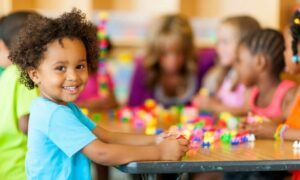If you’ve ever watched a toddler beam with pride after mastering a forward roll, you know there’s more going on than cute photo ops. Toddler gymnastics is a purposeful, play-based way to help little bodies and brains grow together. In a class designed for ages 18 months to 3 years (give or take), kids explore soft equipment, learn simple movement patterns, and practice following short, upbeat instructions. The result isn’t just physical skill—it’s a cascade of benefits for balance, language, self-regulation, and social confidence. Below, we’ll look at how toddler gymnastics supports early development, what to look for in a program, and a few ideas you can try at home.
Building the Brain–Body Connection
Early childhood is a prime time for wiring the brain through movement. When toddlers crawl up a wedge, step over a foam beam, or reach to hang on low bars, they’re creating and strengthening neural pathways that support coordination and attention. Repetitive patterns—march, jump, land—help the brain learn to anticipate and organize sequences. This kind of multisensory movement primes the vestibular (balance) and proprioceptive (body awareness) systems, which are foundational for sitting still at circle time, holding a crayon, and eventually, learning to read and write. In short, toddler gymnastics isn’t just about flips; it’s about giving the brain rich, patterned input that fuels learning across domains.
Gross Motor Skills: Balance, Coordination, and Core Strength
Toddlers are busy mastering the basics: walking, running, climbing, and jumping. Gymnastics breaks these into bite-sized skills that feel like play. Low beams build balance and ankle stability; soft blocks and mats invite safe climbing; mini-trampolines introduce controlled jumping and landing. Each activity engages the core—those deep abdominal and back muscles that support posture and protect the spine. A stronger core helps toddlers sit comfortably at a table, maintain good alignment while walking, and move with more control. Over time, you’ll notice smoother transitions between movements, fewer stumbles, and a growing willingness to try new challenges.
Fine Motor Readiness and Bilateral Coordination
It’s easy to overlook how much hand and finger work happens in toddler gymnastics. Gripping a bar, placing hands flat for a bear walk, or “sticky fingers” on wall holds all develop hand strength and wrist stability. Crossing midline—reaching the right hand across the body to the left side and vice versa—is a crucial pre-writing skill that shows up during tunnel crawls and obstacle courses. Bilateral coordination (using both sides of the body together) gets a workout when toddlers jump with two feet, wheelbarrow walk with a caregiver, or hold onto a rope while stepping along markers. These experiences lay groundwork for later tasks like cutting with scissors, buttoning, and tying shoes.
Cognitive Development: Focus, Memory, and Problem-Solving
A well-run toddler gymnastics class looks spontaneous, but it’s structured to grow cognitive skills. Short instructions (“hands up, jump, stick!”) strengthen receptive language and working memory. Waiting for a turn, listening for a cue, and moving in sequence ask toddlers to practice executive functions—focus, impulse control, and flexible thinking. When a block tower wobbles or a new station feels tricky, children start troubleshooting: Where should my foot go? What happens if I bend my knees more? These small moments of problem-solving foster persistence and a growth mindset that carry into preschool and beyond.
Social–Emotional Growth: Confidence, Cooperation, and Self-Regulation
Toddler gymnastics is about community as much as movement. Circle-time warmups, partner stations, and simple group games teach turn-taking, sharing space, and cheering for peers. For many children, it’s also a gentle introduction to separating from a caregiver (or learning to collaborate with one in parent–tot classes). Achievable challenges—balancing on a line, rolling down a mat—create frequent wins that boost confidence. Just as important, the class provides a safe place to practice coping skills: taking deep breaths when frustrated, trying again after a fall, and using words or gestures to ask for help. These experiences help kids build self-regulation in a playful, supportive setting.
Sensory Integration: A Playground for the Senses
Movement-rich environments are goldmines for sensory integration. Swaying on a balance beam stimulates the vestibular system; crawling through tunnels offers deep-pressure, proprioceptive input; textured mats add tactile variety. Because toddler gymnastics offers a spectrum of sensations—fast and slow, high and low, firm and soft—children can gradually discover what feels “just right” for their bodies. Thoughtful coaches also modulate sensory load with predictable routines and clear transitions, which is especially helpful for kids who are sensory-seeking or sensory-sensitive.
Language and Early Literacy Foundations
You’ll hear lots of verbs, positional words, and sequencing language in a gymnastics class: jump, roll, under, over, first–then–next. Repeating these words during action makes them stick. Songs with motions add rhythm and rhyme, which are building blocks of phonological awareness. Labeling body parts (“hands on knees,” “toes together”) expands vocabulary, and simple choices (“beam or tunnel first?”) encourage expressive language. For bilingual families, toddler gymnastics is a great place to practice both languages—movement provides context clues that make comprehension easier.
Safety, Readiness, and What’s Age-Appropriate
Safety is central to toddler gymnastics. Look for padded floors, low equipment, and coaches trained in age-appropriate spotting. Classes for this age should prioritize exploration over “perfect form,” with stations set close to the ground and clear pathways to prevent collisions. Readiness varies: some 18-month-olds are fearless climbers; others prefer to observe a few sessions before joining in. Follow your child’s cues—encourage but don’t push. A good rule of thumb is short bursts of focused activity (two to five minutes at a station) with plenty of variety. And remember: proper hydration, flexible clothing, and bare feet (or grippy socks if required) go a long way toward safety and comfort.
Quick safety checklist for parents:
- Choose programs with small class sizes and visible, soft landing surfaces.
- Ask about coach credentials and first-aid/CPR training.
- Confirm that skills progress from simple to more complex with clear spotting.
- Stay within arm’s reach when classes are caregiver-participation.
- Celebrate effort, not just outcomes, to keep pressure low and joy high.
Choosing the Right Toddler Gymnastics Program
Not all programs are created equal. Tour a class, if possible, and watch how coaches interact with kids. Are instructions simple and positive? Do they model skills and offer hands-on help when needed? Look for a balance of routine (so toddlers know what to expect) and novelty (so they don’t get bored). Class size matters; smaller groups allow more turns and individualized attention. Facilities should be clean, well-lit, and laid out to minimize bottlenecks. Ask about parent involvement—some toddlers benefit from a caregiver alongside them, while others thrive with gentle independence. Finally, consider scheduling and temperament: a morning class might suit a well-rested child; an evening class could be tough after a long day.
What Progress Looks Like (and What It Doesn’t)
Progress in toddler gymnastics is rarely linear. One week your child might try every station; the next they only want the foam pit. That’s normal. Look for subtle gains: steadier steps on a line, more controlled landings, better ability to wait for a turn, or newfound enthusiasm to copy the coach’s movements. Avoid comparing your child to others—developmental timelines vary widely in the toddler years. If something consistently seems uncomfortable or overwhelming, share your observations with the coach; small adjustments can make a big difference.
Simple Toddler Gymnastics Activities to Try at Home
You don’t need fancy equipment to bring the benefits home. Use what you have and keep it simple:
- Balance line:Tape a line on the floor and practice “tightrope” walking, heel-to-toe, forward and backward.
- Pillow mountain:Stack couch cushions into a low “hill” for climbing up and rolling down.
- Animal parade:Bear walks, crab walks, frog jumps—call the animal and copy its movement together.
- Target jumps:Place paper plates as “lily pads.” Jump two feet to land and “stick it” with hands up.
- Tunnel time:Crawl under chairs or through a cardboard box “tunnel” for midline crossing and core work.
- Freeze shapes:Play music, then call “star,” “pencil,” or “tuck” and freeze in that shape—great for body awareness and listening.
Keep sessions short (10–15 minutes), rotate activities, and end on a successful, fun note.
The Long-Term Payoff
While few toddlers will pursue competitive gymnastics later, the foundational benefits of toddler gymnastics last. Improved balance and coordination translate to playground confidence and lower injury risk. Better body awareness supports fine motor tasks like drawing and self-care. Executive function gains—listening, planning, and self-control—pay off in preschool routines and early academics. Perhaps most importantly, kids learn that movement is joyful, that trying hard matters, and that their bodies are capable. Those lessons set the stage for a lifelong, healthy relationship with physical activity.
Final Thoughts
Toddler gymnastics offers a smart blend of structure and play that meets young children exactly where they are developmentally. With the right program and a playful spirit at home, you’ll see growth in strength, balance, language, social skills, and self-confidence—often within just a few weeks. Whether your child’s favorite station is the beam, the tunnel, or the foam pit, the real win is the whole-child development happening along the way. If you’re on the fence, visit a trial class, watch your toddler explore, and let their smile be your guide.































